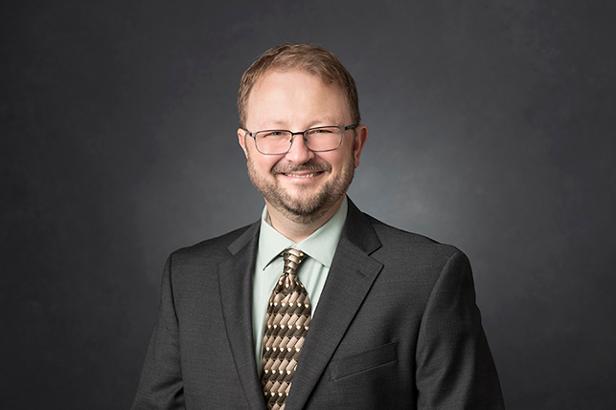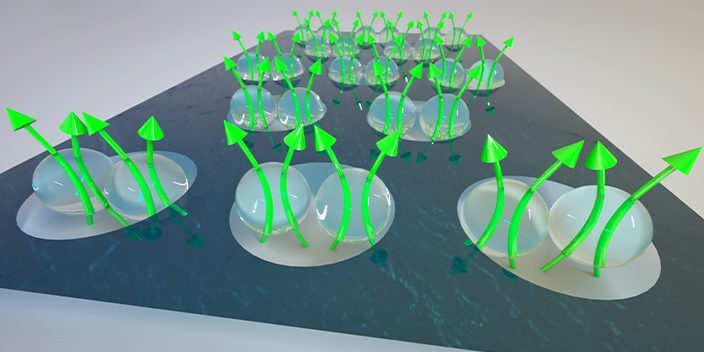
Prof. Gabor Csathy
Leading the Department and Innovative Research
Mary Martialay
Prof. Gabor Csathy has had an extremely productive year. He went from Interim Head to Department Head and still makes time for teaching and groundbreaking research. Below we feature his research as written by the Purdue University Office of Research.
Discovery of the ‘bubble phase of composite fermions’ confirms existence of a new family of quantum matter
WEST LAFAYETTE, Ind. – Like finding a hidden world, physicists dialing up the magnetic field on a semiconducting material have discovered the first in a new family of matter that flowers from the bizarre realm of the quantum scale. In what researchers dubbed the bubble phase of composite fermions, pairs of quasiparticles – particle-like entities arising from the interaction of particles – align in a crystalline pattern, allowing electricity to flow along the edge of the material.
The discovery represents a previously unobserved arrangement of composite fermions, which are entities that behave like particles and are formed from the interaction between electrons and magnetism. The bubble phase of composite fermions falls into a category of matter properly called topological insulators, which denotes that electricity flows only along the outer surface or edge of the material, while the cross-section does not conduct electricity. While dozens of topological insulators have been discovered by condensed matter physicists, the combined paired and periodic structure of the bubble phase represents an entirely new family or sub-category of “highly correlated topological phases” that had been theorized but not previously observed.

“As the first member of a new family of highly correlated topological phases, this new phase expands our understanding and offers a glimpse of the role of electronic interactions in generating higher order correlations in electronic systems,” said Gábor Csáthy, a Purdue University professor and head of the Department of Physics and Astronomy.
For the moment, the discovery, published recently in Nature Physics, is largely a curiosity. While future applications may be developed in areas like quantum computing and information storage, the search for topological insulators is driven by a spirit of exploration.
Can we find more topological materials beyond what is known? And what will that teach us about the relationship between those topological phases,” Csáthy said. “It’s a stimulating field, with a lot of new ideas that’s building out what we can think of as almost a periodic table of matter.
Csáthy is an expert in cryogenic techniques that supercool materials for testing, which subdues matter to its least excited state and makes it easier to discern one individual electronic arrangement from another. Advances in cryogenic technology and techniques as well as the purity of testing materials made it possible to find this more obscure topological phase. To find the bubble phase, Csáthy used an ultrapure wafer of gallium arsenide sandwiched between layers of aluminum gallium arsenide. A wafer about 16 square millimeters was prepared by collaborators led by Loren Pfeiffer, a Princeton University senior research scholar.
The sandwich construction of the wafer confines electrons to the gallium arsenide, effectively creating a single sheet of electrons, to which an electric current is applied. With the wafer cooled to 0.012 degrees Kelvin, Csáthy increased magnetic field strength on the wafer while measuring current flow along, and resistance across, the sample. Two lines on a resulting graph show the gallium arsenide slipping in and out of previously known topological phases as the magnetic field strength rises. But at a magnetic field strength of about 7.76 Teslas, voltage along the wafer dropped to zero, revealing the new phase.
The known categories of topological insulators can be organized by increasing complexity. The simplest category can be envisioned by imagining the electron as carrying the electrical charge, with the charge equaling that of one electron. But one step up in complexity is a different story. In this category, the composite fermion – which arises from the collective interactions of electrons and magnetic flux quanta – carries the charge. At this point, described in physics as the fractional quantum Hall effect, it’s helpful to think of the basic unit of electricity as an object charged with a fraction of the charge of an electron. And sure enough, even though that object, in this case the composite fermion, arises from the interaction of more than one electron, it carries only a fraction of an electron’s charge.
Physicists have long predicted an even greater level of complexity, one in which a sufficient density of composite fermions would cause the quasiparticles themselves to interact, forming bunches or bubbles that align in a periodic pattern. Csáthy’s discovery of the bubble phase of composite fermions proves the existence of this fundamental new type of highly correlated topological phase.
“Our experiment demonstrated that this regime of complex order is experimentally accessible by observing a new phenomenon, the so-called reentrance of the fractional quantum Hall effect,” Csáthy said.
Writer/Media contact: Mary Martialay
Source: Gábor Csáthy
A highly correlated topological bubble phase of composite fermions, Vidhi Shingla, Haoyun Huang, Ashwani Kumar, Loren N. Pfeiffer, Kenneth W. West, Kirk W. Baldwin, & Gábor A. Csáthy, Nature Physics, February 2023 https://doi.org/10.1038/s41567-023-01939-2